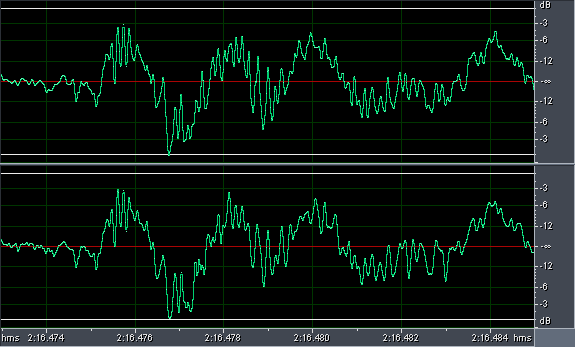
Data transmission schemes: In TDM different channels are assigned individual time slots in the transmitted pulse. WDM transmits data across different wavelength channels. In OFDM, these wavelength channels are closer together, although it means that the signal needs to be filtered out later on by frequency analysis. Reprinted by permission from Macmillan Publishers Ltd. Nature Photonics, advance online publication (2011)
Here in the UK, the fastest broadband download speeds on offer for fibre optic broadband are 40 Mbit per second, which is much better than the 8 Mbit/s or so offered via conventional copper cables. But to those for which 40Mbit/s is not enough, fear not: In a Nature Photonics paper, Juerg Leuthold and colleagues from the Karlsruhe Institute of Technology have now demonstrated 26 Tbit/s optical data transmission – some 650,000 times faster than those 40Mbit/s.
There are different techniques to send large amounts of data through an optical fibre. For example, in Time Division Multiplexing (TDM), the signal transmission is divided into a succession of time slots, and each channel gets one bit in every time slot. This makes sense if you want to combine a number of slower channels (e.g. from individual households) into one fast fibre. The disadvantage of this scheme is, however, that this needs ultrafast lasers. And because short laser pulses are spectrally broader than longer pulses, TDM systems needs to be capable of dealing with these short laser pulses across a broad range of frequencies, which is demanding to realize.
Another scheme is to use longer laser pulses, which are spectrally much narrower, but then to distribute these across several wavelengths, so that data is transmitted in channels each using a different colour. The drawback here again is that you can only squeeze a limited number of those wavelength into your optical setup. Also, great care has to be taken that the laser pulses don’t overlap in wavelength, as otherwise the signals are mixed up between the channels.
To send even more data than possible with these schemes, modern systems use techniques such as orthogonal frequency-division multiplexing (OFDM). OFDM is already widely used for wifi as well as for 4G wireless networks. In comparison to WDM, the different wavelength channels can be squeezed closer together, which means more channels, and therefore much faster data transmission.

Waveform of a snare drum. The different frequencies of the sound correspond to a complex pattern in time. Image by Kuuenbu via Wikimedia
The key in OFDM is that time (as in TDM) and wavelength/frequency channels (as in WDM) are interlinked. Mathematically, frequency signals can be converted into a time signal through a mathematical procedure known as Fourier transform. Take the example of a sound at a constant frequency, such as the musical note A at its frequency of 440 Hz. This sound corresponds to a perfect sine wave of acoustic variations with 440 cycles per second.
The waveform of an instrument, however, has a far more complex shape of ups and downs in intensity over time. And that’s the same for the time signal corresponding to the combination of the signals in the OFDM wavelength channels. It can be compared to the waveform of a complex instrument.
Because the bits transmitted in each OFDM channel last only a very short time, this overall signal has a related characteristic time scale to it, very much like the succession of time slots used in TDM. This time scale is key to avoid cross-talk in OFDM: neighbouring wavelength channels need to be set apart by a frequency difference that is given by this time scale. Mathematically, such signals can be separated even if the wavelengths overlap – they are ‘orthogonal’, and this is what the ‘O’ in OFDM stands for.
To realize such a scheme of course requires the implementation of Fourier transformations. Previously, this could only be done electronically by computers, which limits the speed of data transmission to about 100 gigabits per second. Although this is still much faster than present broadband speeds, it is no match for the 10 terabits per second that has been achieved with TDM.
However, recently a scheme have been realized where this transformation is done all optically, and therefore at much faster speeds. The present work by Leuthold and colleagues makes us of this technique and has implemented an all-optical scheme for OFDM data transmission. All in all, they were able to squeeze 325 transmission channels into the pretty narrow wavelength range from 1,533 to 1,565 nm, as used in optical fibre networks.This way they achieved data transmission of up to 26 terabits per second in an optical fibre over a distance of 50 km. Potentially, even faster speeds will be possible. Now, if only my broadband speed could already catch up with that…
Reference:
Hillerkuss, D., Schmogrow, R., Schellinger, T., Jordan, M., Winter, M., Huber, G., Vallaitis, T., Bonk, R., Kleinow, P., Frey, F., Roeger, M., Koenig, S., Ludwig, A., Marculescu, A., Li, J., Hoh, M., Dreschmann, M., Meyer, J., Ben Ezra, S., Narkiss, N., Nebendahl, B., Parmigiani, F., Petropoulos, P., Resan, B., Oehler, A., Weingarten, K., Ellermeyer, T., Lutz, J., Moeller, M., Huebner, M., Becker, J., Koos, C., Freude, W., & Leuthold, J. (2011). 26 Tbit s−1 line-rate super-channel transmission utilizing all-optical fast Fourier transform processing Nature Photonics DOI: 10.1038/nphoton.2011.74


May 23, 2011
Photonics